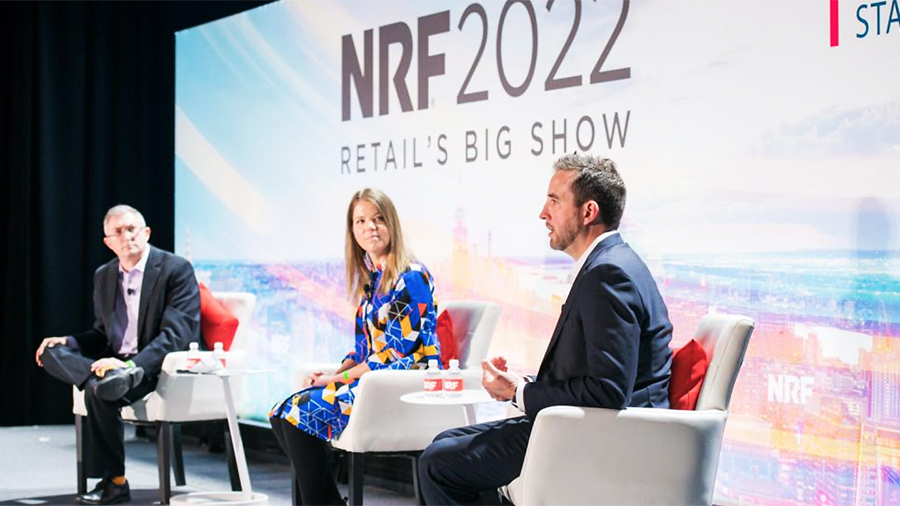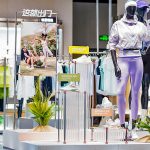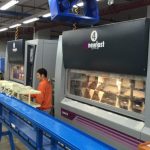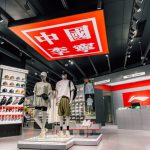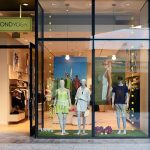At a 2022 NRF Big Show session, the top sustainability executives from Walmart and Rothy’s said one of the biggest lessons they have learned to achieve environmental goals is to set short-term targets as a pathway to long-term goals.
“We have to break it down to very specific actions that each company has to take and, hopefully, there’s accountability in the business,” said Zach Freeze, senior director, sustainability, Walmart. Freeze said setting more intermediate targets makes reaching them more achievable and manageable.
Internally, as well as in working with external partners such as suppliers, it’s important to make sustainable initiatives as practical as possible and show the business advantage.
The 15-year Walmart veteran, Freeze, stressed how important it has been to explain to Walmart’s department heads that while sustainability efforts may be good for society, they can also be positive for its overall business.
“When I’m working with energy teams, I’m not telling them to go off and do something bad for the business. I’m trying to show them that there is business value to this. We can save money by doing this, and we can reduce our packaging, which would reduce costs for the customer. That’s a good way to get started,” said Freeze
The business case also relates to regulations expected to arrive soon associated with climate change that would also compel changes to the supply chain, transportation, waste handling, and other practices. Said Freeze, “We need to get ahead of that, and we need to make sure we’re well-positioned for the future.”
Saskia van Gendt, head of sustainability at Rothy’s, a San Francisco, CA-based start-up known for its sustainably made, washable sneakers, echoed Freeze’s comments on the necessity of short-term goals.
“I think that’s really important,” said van Gendt, who joined Rothy’s in February 2020 after working at Method Products PBC and the U.S. Environmental Protection Agency (EPA).
“You see companies talking about this milestone by 2015 or 2016. The problems that we’re talking about are much more urgently needed to take action on.”
Rothy’s has set three-year goals through 2023, with circular production and carbon neutrality as its target. She said, “We’re working very quickly, and then we’ll continue to evolve our work beyond that.”
Rothy’s looks to mobilize all its departments toward sustainability goals because every function has a part to play.
Van Gendt continued, “We’re working very closely with our product and the sourcing teams on their inputs using recycled materials and how do you construct the shoe. We’re working with our factory to reduce our carbon footprint and eliminate waste in manufacturing, and we’re looking at how do we engage our logistics team to eliminate carbon in the transportation sector.”
Rothy’s uses a vertically-integrated model with ownership of its factory. It also started using recycled materials at the outset of its operation.
“The products are designed for longevity,” added van Gendt. “So every single product that we make is washable so that we can extend the life and the usability of that product as long as possible.”
One primary challenge to achieving circularity is the lack of recycling programs in apparel and footwear. Van Gendt said: “One of the challenges that we’re trying to tackle is how do we create an infrastructure where it doesn’t exist today? How do we engage the customer in a new behavior to return the shoes after end-of-wear to recover those materials? So, those are some of the things that we’re building on our own.”
One of her suggestions was to focus on working on broader goals and seeking insights from outside experts.
“When I came to Rockies, I was surprised that there wasn’t a recycling program for footwear in our industry,” said van Gendt. “I said, ‘Okay, how can I solve this problem of creating recycling programs?’ Yes, we’re working on that. But I also realized I needed to ladder up and look at the issue in a holistic way, not just on this recycling solution, but how can we be more circular in our entire business model and work with all the business leaders to identify solutions to that. So, another learning for me is how to ladder up and look at the business as a whole, but then rely on these functional experts. They often will have the best ideas about developing solutions to be more circular in production or reduce our carbon footprint. So I enlist the expertise of each function as well.”
She said Rothy’s has advantages as a vertical manufacturer.
“When you own the full supply chain and your factory, that opens up opportunities because you can do things that include rapidly innovating and prototyping within your manufacturing sector.”
Rothy’s is also looking at on-demand production, or manufacturing product, when a customer orders a product, thereby eliminating waste in manufacturing.
She added, “I think the flip side of owning your own supply chain is that all of the responsibility for the environmental and social impacts of your supply chain is on you. So I see that as an opportunity, but it also is absolutely a challenge.”
Walmart’s sustainability push started about 15 years ago when CEO Lee Scott, Jr. established commitments to reach renewable energy, zero waste, and self-sustainable products. Said Freeze, “At the time, nobody in the company knew what that was. Everyone was excited about it but also thought, ‘I don’t know what that means. How does it make sense for our business?'”
Walmart leaned on external advisors and NGOs such as the World Wildlife Fund and Nature Conservancy to learn and “understand our biggest impacts” related to sustainability.
While having intermediate goals, Walmart has committed to being a zero-emission company in its operations by 2040. The target includes 100-percent renewable energy, a zero-emission transportation fleet and converting to low-GWP refrigerants for cooling food in its stores. Said Freeze, “It’s something that we feel is imperative for our business to succeed.”
The push also involves outside partners, including vendors.
In 2017, Walmart launched its Project Gigaton to incentivize vendors and its partners to reduce one billion metric tons collectively, or a gigaton, of greenhouse gases from the global value chain by 2030.
“We’ve taken it from a couple of hundred suppliers to we now have over 3,000 companies engaged, and that’s growing,” said Freeze. “We want more companies engaged.”
He noted that Walmart suppliers are also working with other retailers and bringing their greener production and supply chain practices to them. Said Freeze, “I think it’s important for everyone to send that same signal to your suppliers because hearing it from the retailer, hearing it from their customer, is critically important for them to take on the sustainability steps that are needed to either get started or to accelerate their journey.”
Walmart has also made its sustainability tools and insights publicly available online to help suppliers and retailers with their sustainability efforts. And in July, Walmart joined H&M, Ikea, and other retailers on a new climate change initiative—Race To Zero, geared at accelerating climate action across the global retail sector.
Freeze and van Gendt agreed that collaboration and sharing best practices are critical. Said Freeze, “We want to help encourage the entire retail industry to [commit to net-zero carbon emissions] as well because we see our fate as one that is tied to the industry as a whole.”
Scot Case, VP, CSR and Sustainability at the National Retail Federation, who led the discussion, noted that defining sustainability can be challenging beyond being overwhelmed by sustainability targets because there are so many buzzwords.
“People talk about the circular economy, People, Planet and Profit, zero waste, energy efficiency, carbon footprints, corporate social responsibility, DEI – it’s everything, and it can be overwhelming because no retailer can tackle all pieces of it. So the challenge is how does one define sustainability in a meaningful way for everyone? And at NRF, we’re talking about creating net positive, environmental, social, and community benefits.”
Underlying trends driving sustainability, according to Case, are that “consumers care” about the environment and are demanding greater transparency into the sustainable impact of supply chains. He also said “externalities matter,” with the issue of climate change particularly causing companies across industries to realign business models.
“The challenge for retailers, however, is that absolutely every single purchase, everything anyone buys, every business decision has hidden human health, environmental and social impacts.,” said Case.
NRF’s Scot Case, Rothy’s Saskia van Gendt and Walmart’s Zach Freeze spoke about retail sustainability at NRF 2022: Retail’s Big Show. Photo courtesy NRF

